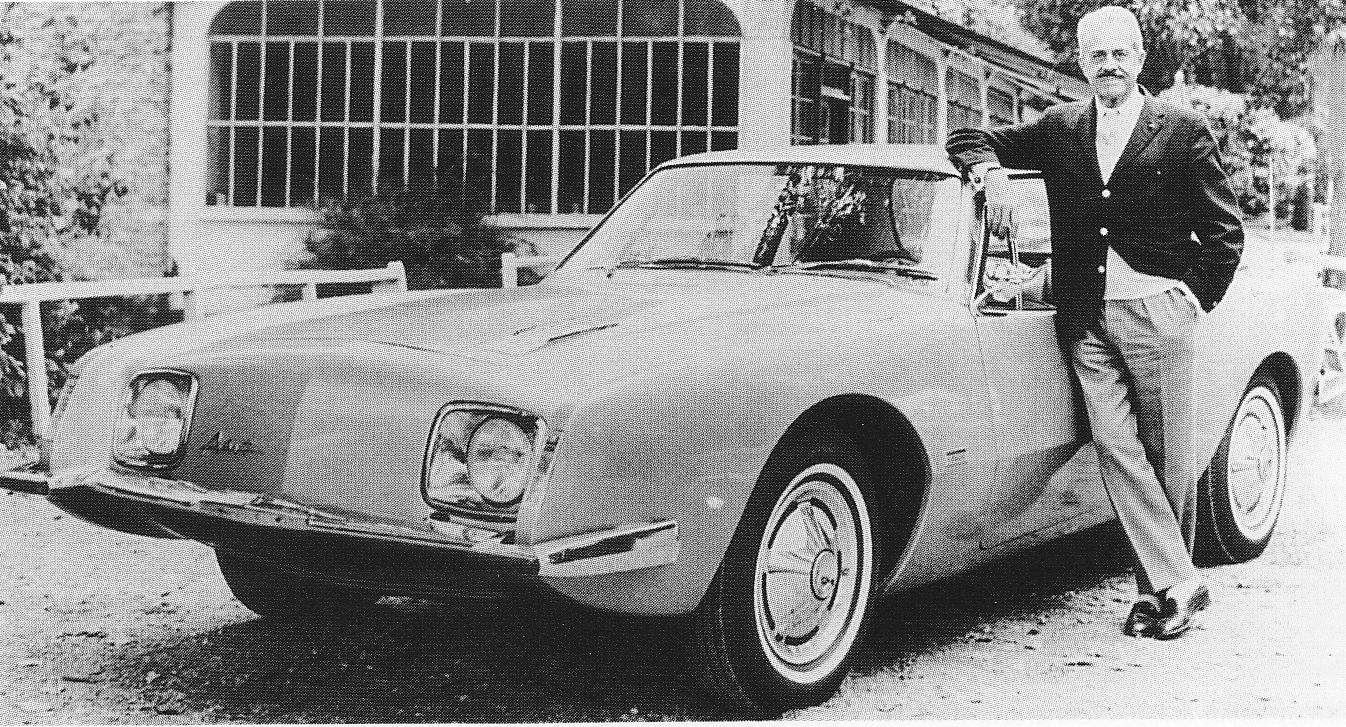This article covers only Raymond Loewy's relationship with Studebaker
Raymond Loewy (pronounced LOH-ee), November 5, 1893 – July 14, 1986, was a French-born American industrial designer who achieved fame for the magnitude of his design efforts across a variety of industries. He was recognized for this by Time magazine and featured on its cover on October 31, 1949. He spent most of his professional career in the United States. Among his designs were the Shell, Exxon, TWA and the former BP logos, the Greyhound Scenicruiser bus, Coca-Cola vending machines, the Lucky Strike package, Coldspot refrigerators, the Studebaker Avanti and Champion, and the Air Force One livery. He was involved with numerous railroad designs, including the Pennsylvania Railroad GG1 and S-1 locomotives, the color scheme and Eagle motif for the first streamliners of the Missouri Pacific Railroad and a number of lesser known color scheme and car interior designs for other railroads. His career spanned seven decades.
Loewy had a long and fruitful relationship with Studebaker. Studebaker first retained Loewy and Associates and Helen Dryden as design consultants in 1936. Then in 1939 Loewy began work with their principal designer, Virgil M Exner. Their designs first began appearing with the 1939 Studebakers’. Loewy also designed a new logo which replaced the “turning wheel” which had been the trademark since 1912. During World War II, American government restrictions on in-house design departments at Ford, General Motors, and Chrysler prevented official work on civilian automobiles. Because Loewy’s firm was independent of Studebaker, no such restrictions applied. This permitted Studebaker to launch the first all-new postwar automobile in 1947, two years ahead of the “Big Three.” His team developed an advanced design featuring flush-front fenders and clean rearward lines. The Loewy staff, headed by Exner, also created the Starlight body which featured a rear-window system wrapping 180° around the rear seat. 1953 Studebaker Commander Starliner hardtop, in addition to the iconic bullet-nosed Studebakers of 1950 and 1951, the team created the 1953 Studebaker line, highlighted by the Starliner and Starlight coupes. (Publicly credited to Loewy, they were actually the work of Robert Bourke.) The Starlight has consistently ranked as one of the best-designed cars of the 1950s in lists compiled since by Collectible Automobile, Car and Driver, and Motor Trend. The ’53 Starliner, recognized today as “one of the most beautiful cars ever made”, was radical in appearance, as radical in its way as the 1934 Airflow. However, it was beset by production problems. To brand the new line, Loewy also contemporized Studebaker’s logo again by applying the “Lazy S” element. His final commission of the 1950s for Studebaker was the transformation of the Starlight and Starliner coupes into the Hawk series for the 1956 model year.

Lowey and the new Studebaker Avanti
Loewy again returned to Studebaker for the Avanti design project, March of 1961. The design was completed in record time and the Avanti appeared in production in the fall of 1962 as a 1963 model. This would be Studebakers last all new car.
